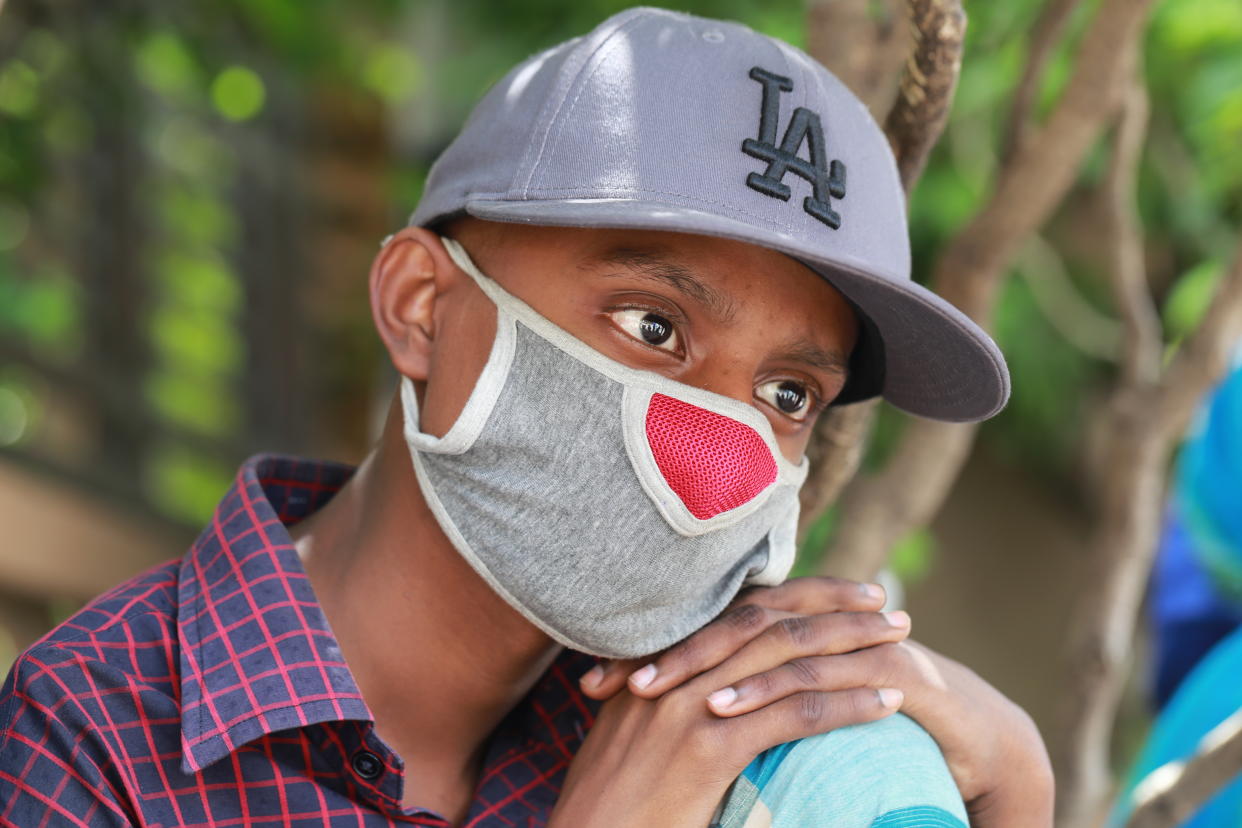Small study reveals children with coronavirus suffered temporary brain damage

A small study has revealed some of the coronavirus complications children can experience.
The vast majority of people who have died with the infection worldwide were elderly or had an underlying medical condition.
Children have largely escaped unscathed, with one study suggesting they are half as likely to catch the coronavirus in the first place, let alone become seriously unwell.
Alarm bells were raised, however, when a number of youngsters who tested positive for the infection developed multi-system inflammation.
After looking at 27 of these patients, scientists from Great Ormond Street Hospital (GOSH) found four showed signs of brain damage, as well as suffering from sudden muscle weakness and reduced reflexes.
While it may sound alarming, all the youngsters improved, with two of them fully recovering within 18 days.
Early research suggests the coronavirus is mild in four out of five cases, however, it can trigger a respiratory disease called COVID-19.

The coronavirus is thought to enter respiratory cells via a receptor called ACE2, which is also expressed in neurons in the brain.
Early in the outbreak, scientists suspected the infection affected the brain, given it commonly causes fatigue and loss of taste or smell.
“Direct viral invasion of the central nervous system is a possible mechanism for neurological manifestations of COVID-19”, the GOSH team wrote in the journal JAMA Neurology.
To better understand how children may be affected, the scientists looked at 27 people under 18 who were admitted with the coronavirus and multi-system inflammatory syndrome.
NHS doctors were told to look out for signs of multi-system inflammation after intensive care units in London saw eight children with unusual symptoms, some of whom tested positive for the coronavirus.
A study later revealed how 10 children developed a “rare inflammatory disorder” in the Bergamo province of Italy after the outbreak emerged in the north of the country.
‘Further evidence COVID-19 can cause injury to the brain’
In the GOSH research, four of the 27 children (14%) developed neurological symptoms, like headaches, involuntary movements and difficulty swallowing.
All four required intensive care and mechanical ventilation, with three showing changes to the splenium part of their brain on an MRI scan. This has been associated with confusion, speech disorders and seizures.
Three of the youngsters underwent electroencephalography, which monitors the electrical activity of the brain. All showed a mild case of slow activity.
When it came to treatment, three of the patients were given drugs that modified their immune response. None required antiviral therapy.
Two were discharged from hospital after 11 and 18 days, respectively, fully able to walk and control their movements.
The remaining two patients left intensive care, but were still inpatients. Both showed signs of improvement, but were wheelchair bound due to muscle weakness in their legs.
Although unclear, the scientists wondered whether the coronavirus damages the blood brain barrier, leading to an immune-led attack on the central nervous system.
Neurological symptoms may also be a side effect of the inflammatory disease, they added.
The scientists stressed, however, the study was small and further research is required.
Dr Ross Paterson from University College London called the research “small but important”.
“This is further evidence COVID-19 can cause injury to the brain and nervous system”, he said.
Dr Michael Zandi from University College London Hospitals added: “This important study highlights how the brain can be involved as part of the emerging COVID-19 paediatric multi-system inflammatory syndrome.
“This will help others identify this complication early on and offer tailored treatment to enable to the best chances of recovery”.
What is the coronavirus?
The coronavirus is one of seven strains of a virus class that are known to infect humans.
Others cause everything from the common cold to severe acute respiratory syndrome (Sars), which killed 774 people during its 2002/3 outbreak.
Since the coronavirus outbreak was identified at the end of 2019, more than 10.4 million cases have been confirmed worldwide, according to Johns Hopkins University.
Of these cases, over 5.3 million are known to have recovered.
Globally, the death toll has exceeded 511,000.
The coronavirus mainly spreads face to face via infected droplets expelled in a cough or sneeze.
There is also evidence it is transmitted in faeces and survives on surfaces.
Symptoms typically include fever, cough and loss of taste or smell.
The infection itself has no “set” treatment, with most patients naturally fighting it off.
The steroid dexamethasone is being used in hospitals throughout the UK to reduce the risk of death among patients on ventilators or oxygen.
Officials urge people ward off infection by washing their hands regularly and maintaining social distancing.
Coronavirus: what happened today
Click here to sign up to the latest news, advice and information with our daily Catch-up newsletter
Read more about COVID-19
How to get a coronavirus test if you have symptoms
How easing of lockdown rules affects you
In pictures: How UK school classrooms could look in new normal
How public transport could look after lockdown
How our public spaces will change in the future
Help and advice
Read the full list of official FAQs here
10 tips from the NHS to help deal with anxiety
What to do if you think you have symptoms
How to get help if you've been furloughed



